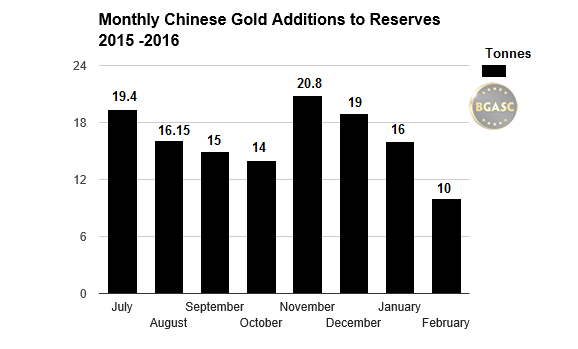
Is The Chinese Gold Train Slowing Down?
Growth In The People’s Bank of China’s Gold Reserves and Gold Withdrawals on the Shanghai Gold Exchange Fell In February
In February 2014, CNBC reported that China had overtaken India as the number one gold consumer in the world. In October 2015, it was reported that India had retaken it position as the number one gold consumer.
The Indian government officially discourages gold importation. Indian gold consumption has been hindered by government import duties on the yellow metal and most recently an additional sales tax. Chinese gold consumption has no such punitive taxes and is limted only by the growth in its economy. Without government disincentives, some gold observers projected that China would once again regain its place as the world’s largest gold consumer.
Chinese economic growth, however, has been slowing recently and with it, its gold consumption. In February 2016, Chinese exports dropped 25%. In reaction to its slowing economy and drop in exports, China has been reducing its overall foreign reserves. Chinese reseves have fallen in recent months and net capital outflows have increased. China has increased its gold reserves in recent months even though it has reduced its overall foreign reserves.
A Slowing Pace of Adding Gold Reserves?
Earlier this week, the People’s Bank of China (PBOC) reported that their February 2016 addition of gold to her reserves was the lowest since they started monthly reporting of gold reserves in June 2015.
The Gold Reserves of the People’s Bank of China
In the summer of 2015, the PBOC updated her gold reserves for the first time since 2009 and began publishing monthly additions to its gold reserves. While the amount reported for the period from 2009-2015 was less than many gold observers expected (604 tonnes), it was still a prodigious amount and propelled China into the top five gold holding nations. Only the United States, Germany, Italy and France (in that order) have more.
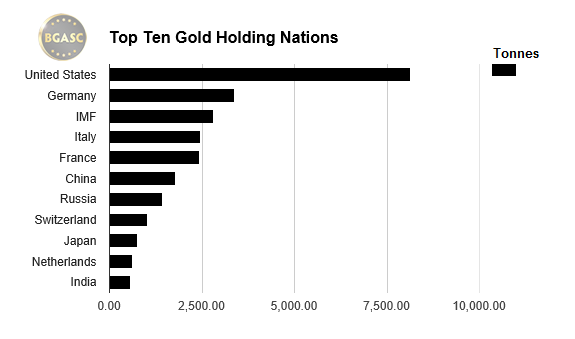
Chinese Gold Reserves Grow to 1,788 Tonnes
From July 2015 to January 2015, the PBOC added over 120 tonnes of gold to reserves, or an average of 17.2 tonnes per month. In February the PBOC added “just” 9.9 tonnes of gold to its reserves. February’s nearly ten tons of gold added to the PBOC’s reserves was the smallest amount added since China began reporting monthly gold reserves last summer.
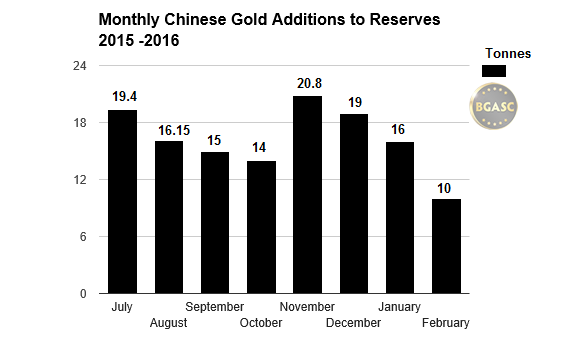
China’s Declining Foreign Reserves
China’s foreign reserves have been falling steadily for nearly a year and fell again in February. According to economists, a decline in foreign reserves implies net capital outflows that were estimated to be $65 billion in February compared to estimated outflows of $136 billion in January. The bulk of China’s foreign reserves have been held in U.S. Treasury bonds. As of December 2015, China was the world’s largest foreign holder of U.S. Treasury bonds with over $1.2 trillion.
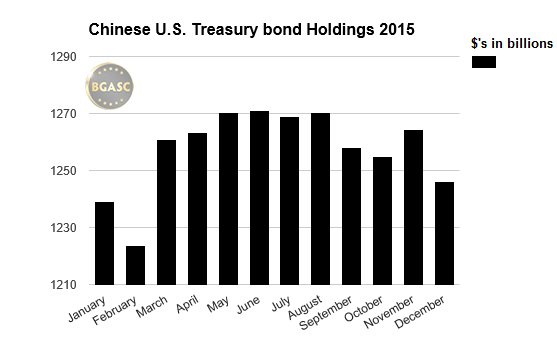
The U.S. Treasury bond holdings assigned to “Belgium” are perhaps more indicative of whether China is adding or shedding U.S. Treasury Bonds. Belgium has long been considered a proxy for Chinese buying and selling of U.S. Treasury securities. The chart below showing the decline in Belgium’s U.S. Treasury Bond holdings corresponds to reports that China has been reducing its U.S. Treasury holdings.
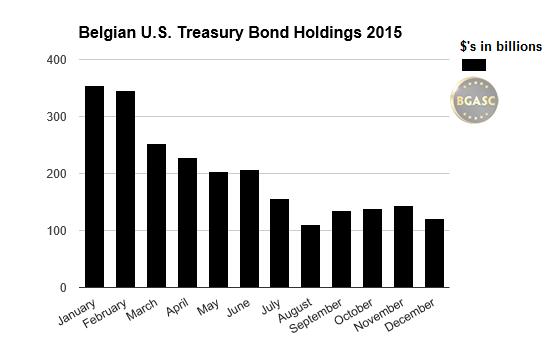
The Shanghai Gold Exchange
China operates the largest Asian physical gold trading market, the Shanghai Gold Exchange (SGE).
Lower Gold Withdrawals on the Shanghai Gold Exchange in January and February 2016
In 2015, Shanghai Gold Exchange withdrawals set an annual record of 2,597 tonnes surpassing the 2013 record of 2,181 tonnes.
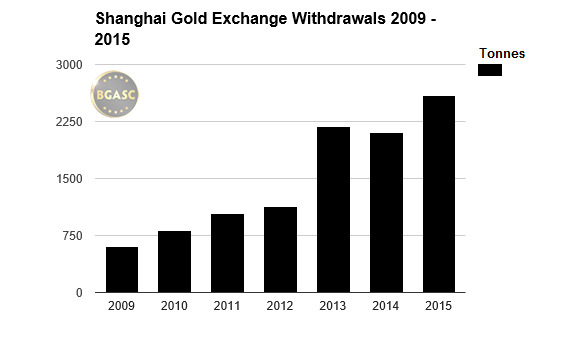
For the past few years, the Shanghai Gold Exchange published weekly gold withdrawal figures. Starting in 2016, the SGE started publishing monhtly withdrawal numbers. January 2016 gold withdrawals on the Shanghai Gold Exchange of 225 tonnes were down 12% year over year and February’s withdrawals of 107 tonnes were down 31% from last February’s 156 tonnes and were the lowest withdrawals in any month since February 2013.
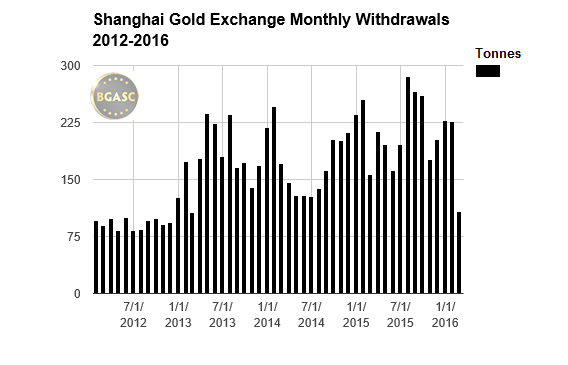
An Off Month or Two, or a Trend?
It’s too early to tell if February’s decreases in the growth of China’s gold reserves and Shanghai Gold Exchange withdrawals represent a trend. Russia added gold to its reserves in 2014 at a solid clip, but hit a rough patch in early 2015 when it sold a portion of its reserves and added no gold to its reserves for two months. Russia, however, made up for the months of not buying gold and added more gold in 2015 to its reserves than in any other year.
Next month when China and the Shanghai Gold Exchange report March numbers, we will find out if the decline in the growth of China’s gold reserves and Shanghai Gold Exchange withdrawals continues or reverses.
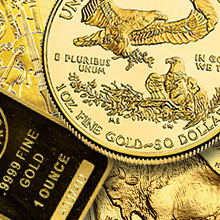
|
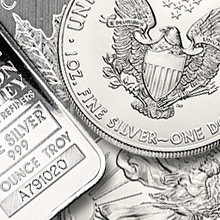
|

|
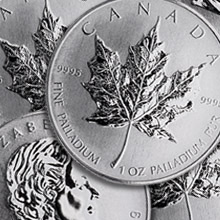
|
Sources: Top gold holding nations: World Gold Council; Chinese Gold Reserves:The PBOC, Reuters, Bloomberg; Chinese and Belgian Treasury Bond Holdings: U.S. Treasury Department; Shanghai Gold Exchange Withdrawals: The Shanghai Gold Exchange, Sharelynx.
This article does not necessarily reflect the explicit views of BGASC, nor should it be construed as financial advice.
